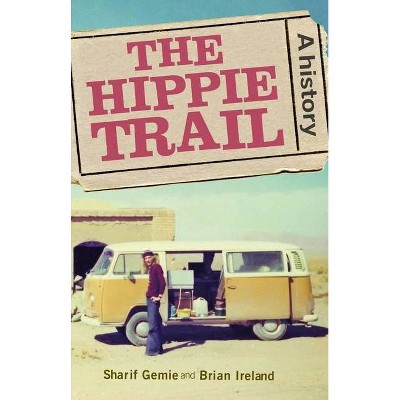The hippie trail - by Sharif Gemie & Brian Ireland (Hardcover)

Similar Products
Products of same category from the store
AllProduct info
<p/><br></br><p><b> About the Book </b></p></br></br>Tracing the history of the Hippie Trail and those who followed it, this book explores the motivations and experiences of these young travellers, mapping their everyday interactions with locals and the joys and hardships of independent budget travel.<p/><br></br><p><b> Book Synopsis </b></p></br></br><p>This is the first history of the Hippie Trail. It records the joys and pains of budget travel to Kathmandu, India, Afghanistan and other 'points east' in the 1960s and 1970s. Written in a clear, simple style, it provides detailed analysis of the motivations and the experiences of hundreds of thousands of hippies who travelled eastwards. The book is structured around four key debates: were the travellers simply motivated by a search for drugs? Did they encounter love or sexual freedom on the road? Were they basically just tourists? Did they resemble pilgrims? It also considers how the travellers have been represented in films, novels and autobiographical accounts, and will appeal to those interested in the Trail or the 1960s counterculture, as well as students taking courses relating to the 1960s.</p><p/><br></br><p><b> From the Back Cover </b></p></br></br>This is the first history of the hippy trail. Based on interviews and self-published works, it records the joys and pains of budget travel out to Kathmandu, India, Afghanistan and other points east during the 1960s and 1970s. Written in a clear, simple style, the book provides a detailed analysis of the motivations and the experiences of the hundreds of thousands of young people who travelled eastwards. The happiness and calm that many found is noted, but the work also has a critical edge, exploring the limitations of the travellers' journeys and the mistakes they made, and discussing the rapidly changing meanings and connotations of the term 'hippy', while setting these themes in the context of 1960s counter-culture. <i>The hippy trail: A history, 1957-78 </i>is structured around four key debates: were the travellers simply motivated by a search for drugs? Did they encounter love or sexual freedom on the road? Were they basically just tourists? Did they resemble pilgrims? A final fifth chapter considers how the travellers have been represented in films, novels and autobiographical accounts. Anyone with a personal connection to the trail, or an interest in the counter-cultures of the 1960s and 1970s will find this book indispensable.<p/><br></br><p><b> Review Quotes </b></p></br></br><br><br>[A] well-written, comprehensive volume, one that can equally serve classrooms, research, and the general reader interested in a fascinating chapter in this important era. - Tom Fels, The Sixties, A Journal of History, Politics and Culture <br><p></p><br><br><p/><br></br><p><b> About the Author </b></p></br></br><br>Dr Sharif Gemie is a historian of modern Europe. He has mainly researched on minority peoples, including refugees, Muslims in Europe, Bretons and Galicians <p/>Dr Brian Ireland is a modern American historian. He has written about such diverse topics as the US military in Hawaii, commemoration and remembrance, travelogues and road movies, rock music, comic books, television, and science fiction literature<br>
Price History
Price Archive shows prices from various stores, lets you see history and find the cheapest. There is no actual sale on the website. For all support, inquiry and suggestion messagescommunication@pricearchive.us




















